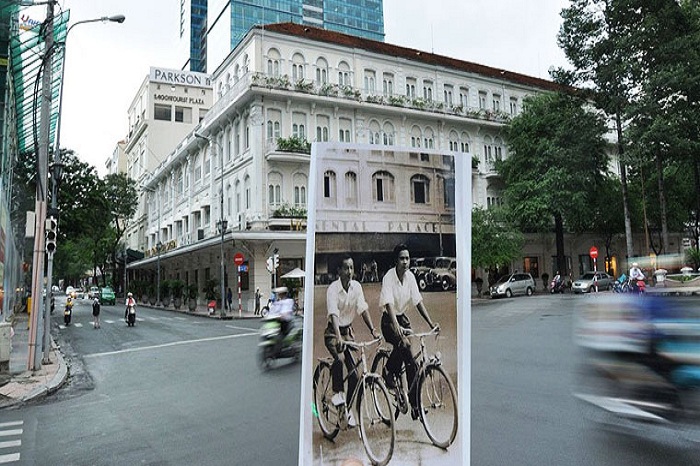
A century and a half of French architecture in Saigon
- on Dec 25, 2019 By: Ngoc Nguyen
Saigon is more than 300 years old while Ho Chi Minh - city celebrates its 43 years, the face of the metropolis transmuted from day to day. Talking about the architectural landmarks of Saigon, we obviously think of the legacy that the French had left from 1859 until their departure. Some works have radically changed while others are preserved by becoming the symbols of the city.
Explore the top ten and their traces in the pearl of the Far East over 150 years!
Saigon central post office
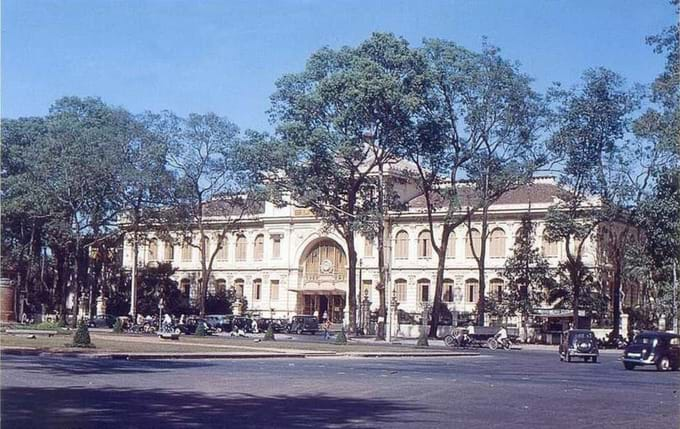
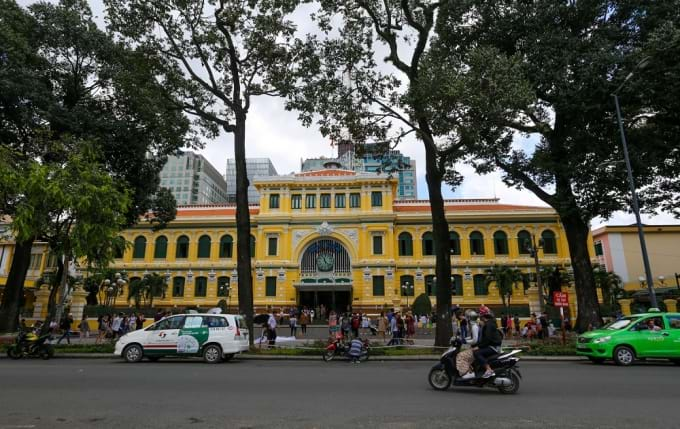
With the taking of Saigon in 1859, the French proceeded to set up the communication network. A year later, the Saigon Telegraph Service was born on the site of the future Post Office. “La Poste” was built in 1886 and finished in 1891 in a western style with some oriental elements. On the rectangular decorations opposite, the founding fathers of telegraphy and electricity are honoured. A stopover is appreciated by many visitors who come to admire its intact charm, inside and out.
>> To read more: Saigon Central Post Office, the old face of Ho Chi Minh City
The train station


One of the oldest French constructions in Saigon is the railway. With 70km, the first railway sections of Vietnam was from Saigon to My Tho, operated in 1885 after four years of construction. Operating until 1978, the station was upgraded to Hoa Hung in District 3. In its place, there is currently the 23 September park and the bus station.
The Mong bridge
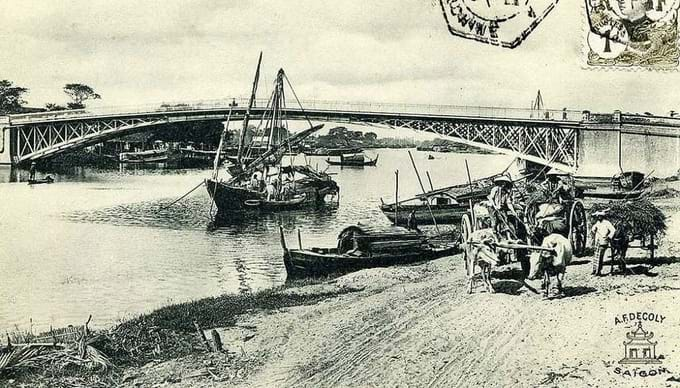
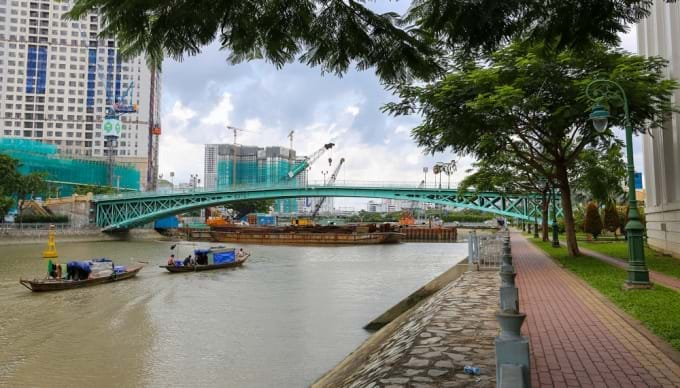
Crossing the Tau Hu - Ben Nghe canal, the Mong bridge connects districts 1 and 4. It was implemented by the Levallois Perret company (former Eiffel) for two years 1893-1894. Without a span, this steel bridge measures 128 meters long and 5.2 meters wide with the spaces painted blue and black originally. It was called Mong by the curve which evoked a rainbow.
During the construction of the East - West boulevard (current Vo Van Kiet street) and the Saigon river tunnel, the bridge was completely dismantled and then installed as is after the completion of the work. The pillars were fortified and an aesthetic lighting system was also installed.
Saigon church
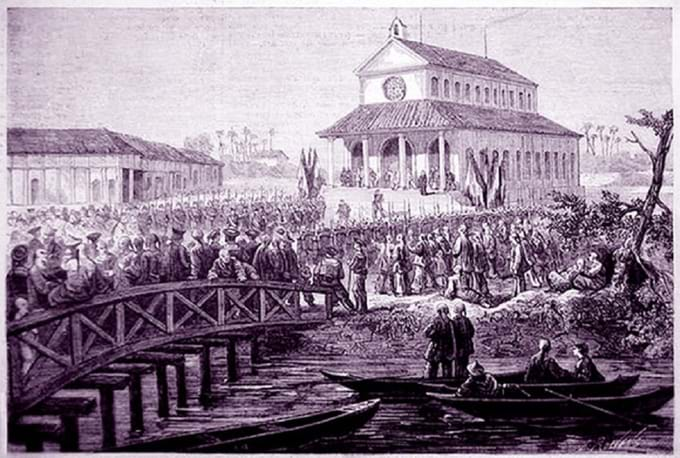
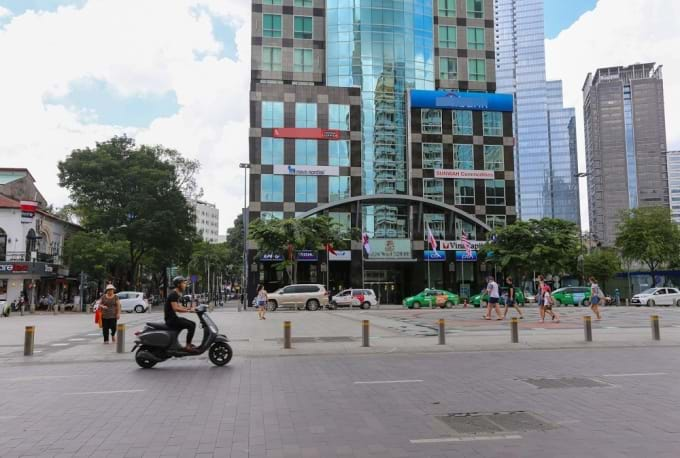
In addition to road infrastructure, the French did not forget to establish a space where Catholics could practice their beliefs. On the grounds of an ancient Vietnamese pagoda, the construction of a first church was launched by Bishop Lefebvre in 1863 and completed in 1865, called the Church of Saigon. Composed of wood, it was close to the Grand Canal which was renamed Charner Canal. In 1887, the canal gave way to boulevard Charner which designated Nguyen Hue street today.
Given the deterioration of the church due to the poor quality of the wood, the Governor of Cochinchina had launched a design competition for a brand new one. The plan by architect Jules Bourard was adopted to give birth to the Notre Dame Cathedral of Saigon, one of the most visited buildings in Ho Chi Minh City. The French had built in 1885, in place of the wooden church, the building of the Court of Conciliation which later gave way in 1995 to the large buildings.
>> You would also like to read: Notre Dame Cathedral of Saigon, the history of a beautiful church
Turtle Lake
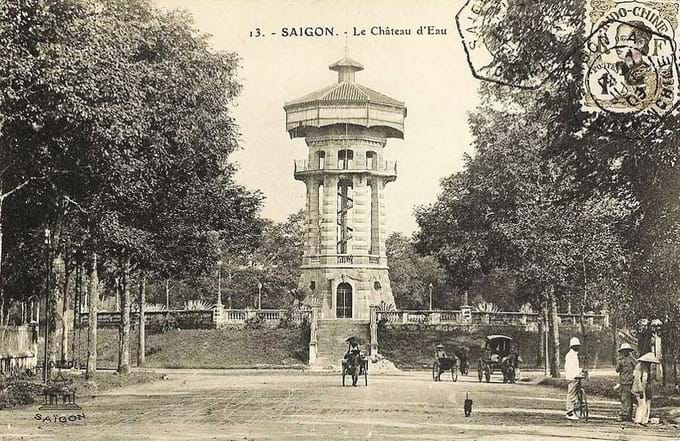
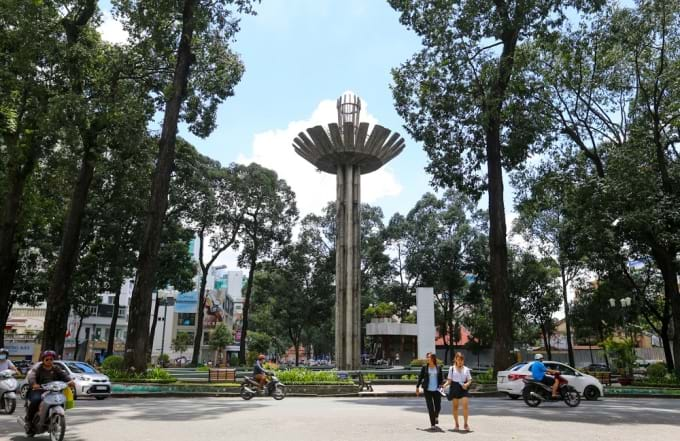
In order to supply water on site, a reservoir was built in 1878 in place of Turtle Lake. In 1921, a statue was erected there, destroying the water tower. Standing until 1956, the statue was ruined by the government of South Vietnam, only a small reservoir of water remains. The Turtle Lake with its contemporary shape was originated from the redevelopments undertaken in 1967. Officially called "International Shipyard", the site is called by the inhabitants Turtle Lake because of the presence of a bronze turtle with a stone stele at the head. This name remains widely used even after the turtle disappeared following an explosion in 1976.
Saigon's first roundabout

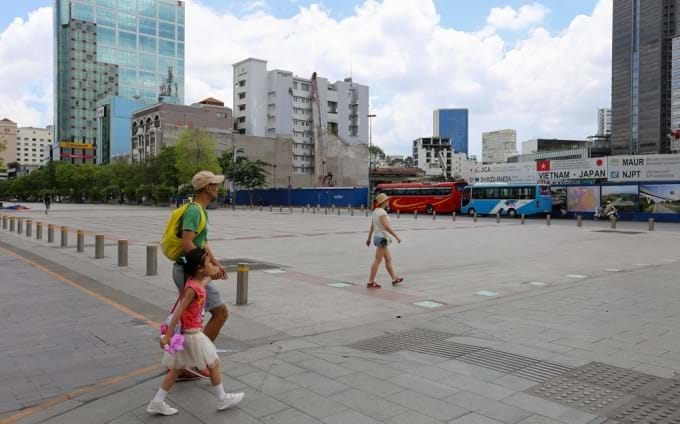
Located at the crossroads of Bonard - Charner streets (Le Loi and Nguyen Hue today), the oldest roundabout in Saigon was an important reference in the past as well as today. Established in 1920 with the development of Charner Boulevard, this crossing was known by a popular name "Bon Ken", where western trumpet players frequented.
In the heart of district 1 and surrounded by sumptuous shopping centres, the roundabout is part of the flower pedestrian street Nguyen Hue 2015, a meeting place and tourist of Ho Chi Minh City.
Catinat prison
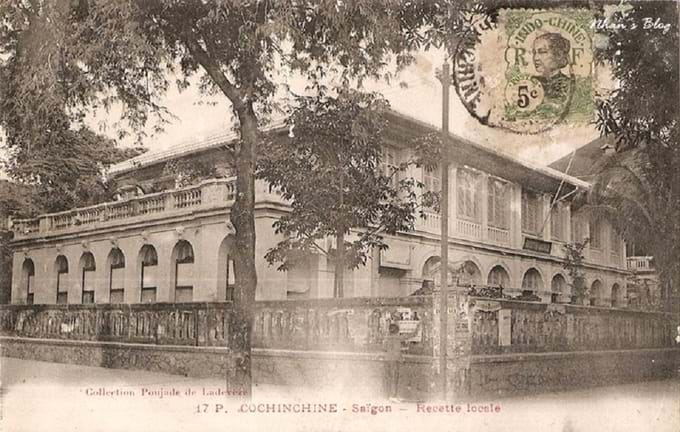

It is at the end of Dong Khoi street (ex-Catinat) and next to Notre Dame Cathedral that you will come across the first colonial prison. Built in 1881, its location near the tribunal court made procedures easier.
When the building of the large prison was completed, it was occupied by the headquarters of the Cochinchina Spy Services, the Tax and the National Treasury. During the period 1955 - 1975, the place was the seat of the Ministry of the Interior of the Government of South Vietnam. You will now find the building of the Culture and Sport Service of Ho Chi Minh City there.
Saigon Opera House
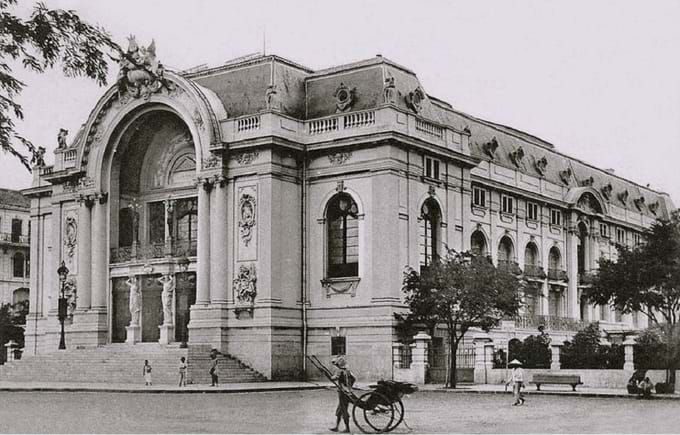

Started in 1898 and completed after two years to welcome the French audience, this work is among the most beautiful preserved architecture in the city. The site was occupied by the then Government Assembly and has served as the Saigon Opera House since May 1975.
>> Read more: Saigon Opera House, the oldest theatre in Vietnam
Continental - Saigon's first hotel
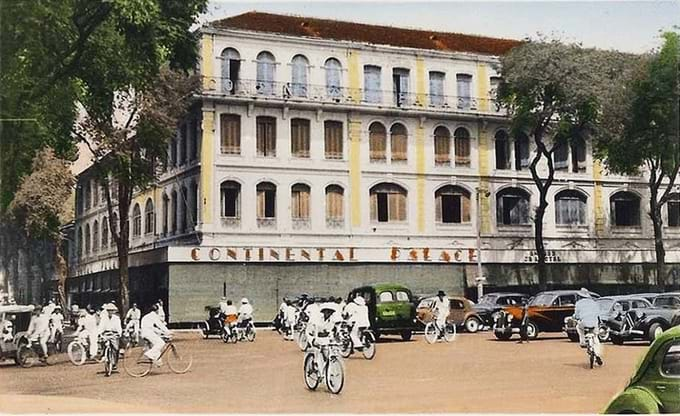
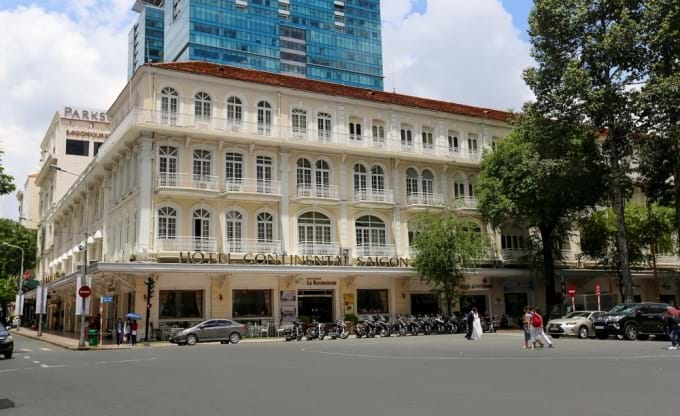
Built in 1878 by Pierre Cazeau, a producer of construction materials and equipment, the first hotel in Saigon was born two years later. The architecture, furniture and decoration are all designed according to the standards of a luxury hotel in Paris. A favourite stop for high-ranking French executives and officers, the Continental Hotel had welcomed writers, artists and celebrities from around the world in 1955 as part of debates on the war in Vietnam. Renamed "Hai Au" after 1975, it recovered its original name in 1990 and shines in the 21st century among the charming hotels of Saigon.
>> You would also like to read: The French heritage in three of the oldest hotels in Saigon
Cho Quan Hospital
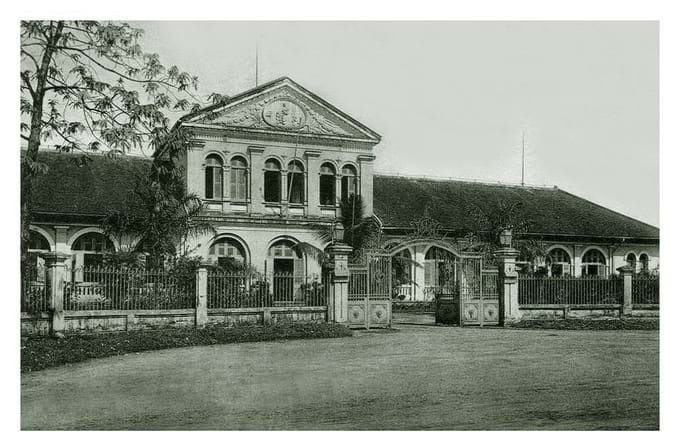
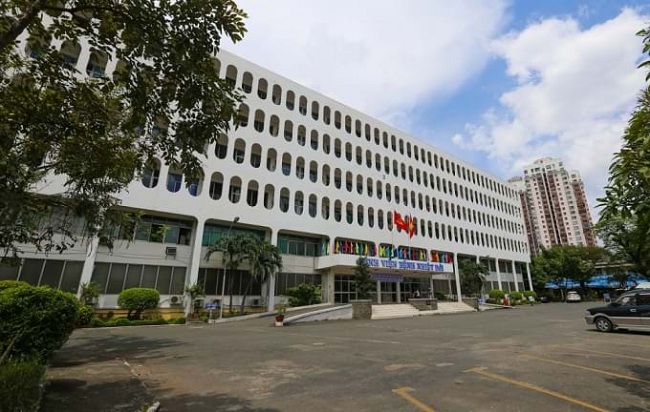
The first hospital in Saigon was founded in 1862, with a popular name "Cho Quan". Covering an area of 5ha and opposite the Tau Hu canal, it was a former garrison infirmary. During the years 1954 and 1957, two of the three hospital structures had dealt with the treatment of activists exposed to tuberculosis, hence its name "Institute for Tuberculosis Control". The establishment resumed at the end of 1957 its civil role as well as its original name. The main six-storey building was constructed in 1972 for two years with the support of South Korea, thus named "Vietnam-South Korean Medical Centre". After 1975, the place renamed itself again and then "Hospital for Tropical Diseases" in 1989.
Photo: Internet
Related articles:
>> Why is Saigon called "the pearl of the Far East"?
>> Bui Vien street, place to go out in the evening in Saigon
 Español
Español Français
Français






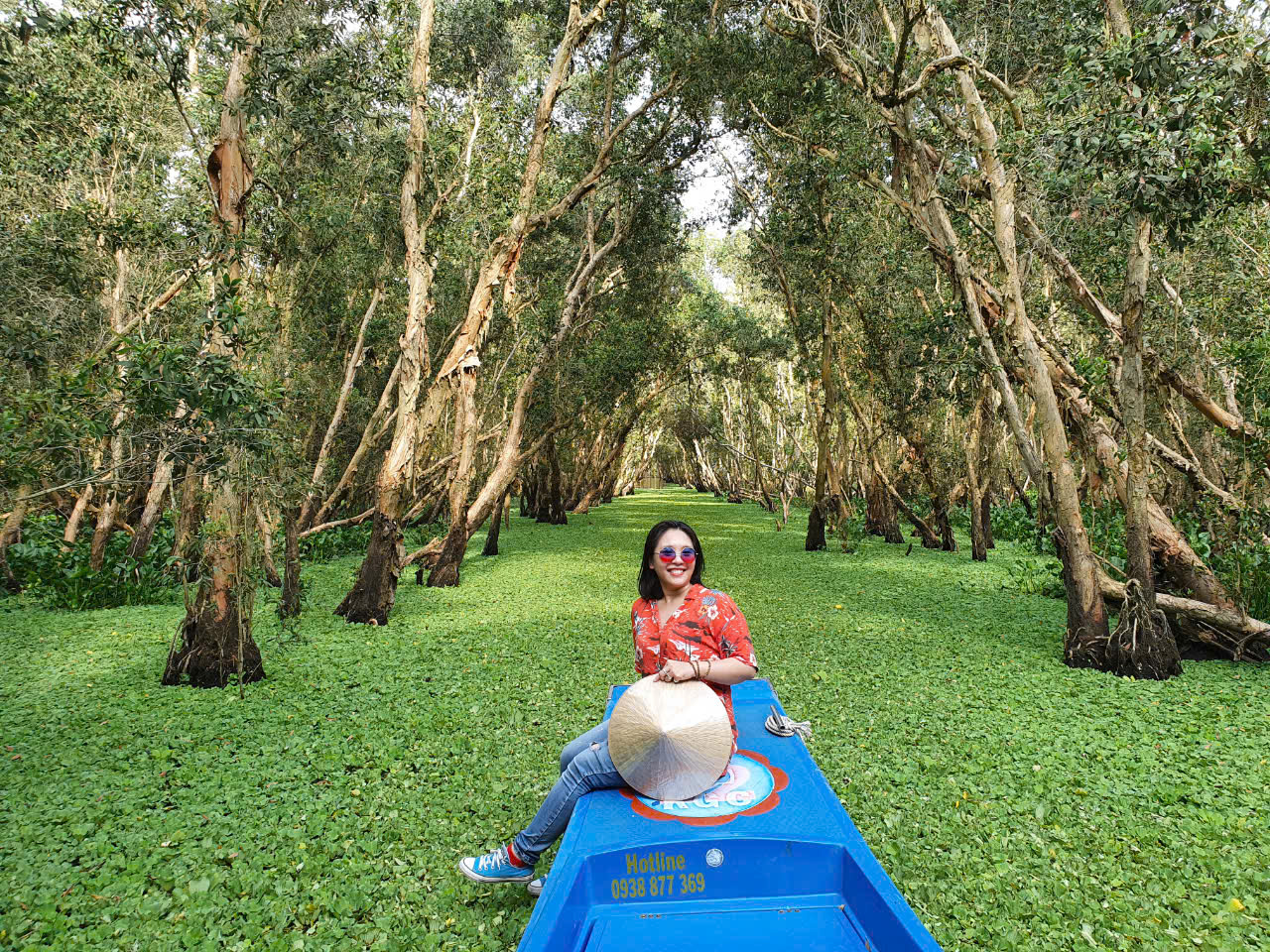

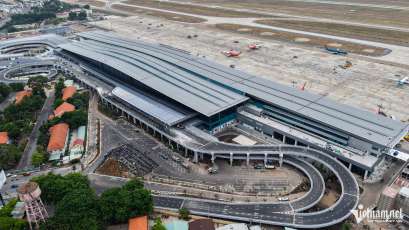
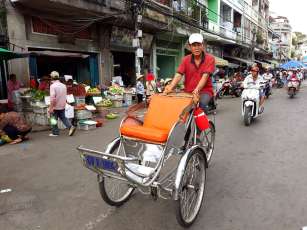
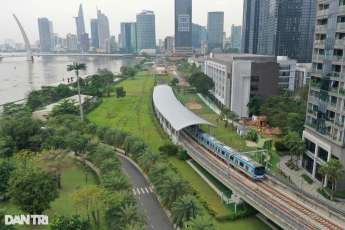

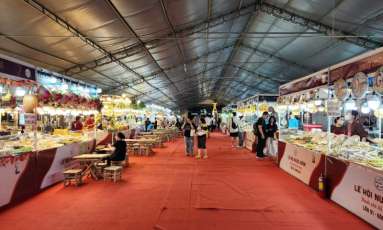







TraZefUK
on Nov 28, 2025HerbertPhomaMS
on Oct 19, 2025Lilyan Cuttler
on Oct 15, 2025Avenue17XC
on Sep 14, 2025Avenue18JL
on Jul 21, 2025